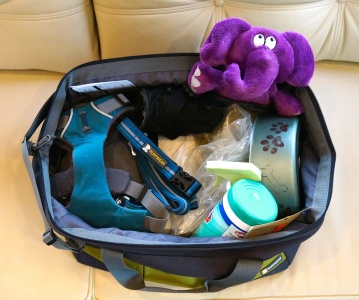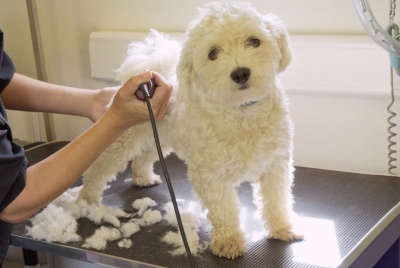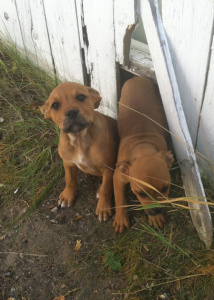Tips for Moving with Your Dog
January 24th, 2023 by Marlene Ring
 Whether you are moving a long distance or just around the block, moving is almost always a chaotic venture. Boxes everywhere, so many things to plan and take care of on both ends, clutter and moving trucks.
Whether you are moving a long distance or just around the block, moving is almost always a chaotic venture. Boxes everywhere, so many things to plan and take care of on both ends, clutter and moving trucks.
 I have a lot of experience in this area being a part of a military family. Having no children, I had the luxury of making my dogs a priority. But, it is easy to forget to plan the move for your dog so that he is Safe, feels more comfortable and can quickly settle into your new home as well.
I have a lot of experience in this area being a part of a military family. Having no children, I had the luxury of making my dogs a priority. But, it is easy to forget to plan the move for your dog so that he is Safe, feels more comfortable and can quickly settle into your new home as well.
BEFORE YOU GO
 Make sure your pet is healthy. Check with your veterinarian and renew any shots that are due. Also, give your pet a treatment of flea and tick medication. There may be parasites where you are headed that are different from where you live. Some parts of the country, especially wooded areas, may be infested with fleas and ticks.
Make sure your pet is healthy. Check with your veterinarian and renew any shots that are due. Also, give your pet a treatment of flea and tick medication. There may be parasites where you are headed that are different from where you live. Some parts of the country, especially wooded areas, may be infested with fleas and ticks.
PROPER IDENTIFICATION
 It’s a great idea to label collars with identifying information but it is absolutely essential to have your dogs microchipped. The microchip is permanent whereas collars and tags can be misplaced.
It’s a great idea to label collars with identifying information but it is absolutely essential to have your dogs microchipped. The microchip is permanent whereas collars and tags can be misplaced.
I microchip and, in addition, have identification and proof of rabies on their collars. Be sure to include a cell phone number in case you’re not at your new home yet. IF YOU ALREADY HAVE YOUR PET CHIPPED, be sure to update all contact information before you leave.
 The veterinary number on the proof of rabies is exclusive to you and will also provide another contact. An address can be helpful especially if long distance rescue measures are necessary to reunite you with your dog.
The veterinary number on the proof of rabies is exclusive to you and will also provide another contact. An address can be helpful especially if long distance rescue measures are necessary to reunite you with your dog.
I remember volunteering at the Humane Society during the aftermath of Hurricane Katrina. It was heartbreaking to wonder if these animals would ever be reunited with their grief-stricken families.
KEEP THEM CALM
Have you ever noticed how your dog reacts when the suitcase comes out of the closet? They know something is up! Some animals will he upset and scared when the boxes and suitcases take over. This is especially true on Moving Day.
 They may hide or even run away. Find a safe place for them to relax where they won’t get hurt or lost. Place them in a room with some toys, water and a comfortable sleeping area. Keep the door closed and put a sign on the door so movers won’t disturb him. Or even better, consider taking him to a friends or Board him at Pawsitive Solutions for the day.
They may hide or even run away. Find a safe place for them to relax where they won’t get hurt or lost. Place them in a room with some toys, water and a comfortable sleeping area. Keep the door closed and put a sign on the door so movers won’t disturb him. Or even better, consider taking him to a friends or Board him at Pawsitive Solutions for the day.
 Keeping your dogs schedule consistent is very important. He is a creature of habit and changes can cause him to act out.
Keeping your dogs schedule consistent is very important. He is a creature of habit and changes can cause him to act out.
Maintaining his daily routine will help him stay calm.
GATHER YOUR PET’S SUPPLIES
 Especially important is your pet’s food and water. Other items you will want to bring along are a quality leash, medications, portable water dish, dog treats, toys, brush, shampoo, an old sheet or two for covering up hotel furniture, and plastic bags for picking up after your pet.
Especially important is your pet’s food and water. Other items you will want to bring along are a quality leash, medications, portable water dish, dog treats, toys, brush, shampoo, an old sheet or two for covering up hotel furniture, and plastic bags for picking up after your pet.
 DON’T WASH your dog’s blankets. Everything is changing and the familiar smell of his blankets will help him feel at home during travel and at your new location. Once your stuff gets there, the new house will start to smell like home.
DON’T WASH your dog’s blankets. Everything is changing and the familiar smell of his blankets will help him feel at home during travel and at your new location. Once your stuff gets there, the new house will start to smell like home.
GROOMING
 It’s a good idea to get your dog groomed before you go. It may be hard to find a new one and why would you want the added stress of finding a groomer during the chaos of unpacking? Plus, your dog will have more time to acclimate to his new environment and settle in to the new place before facing a NEW groomer. So consider bathing and grooming prior to travel. It will just make your pet more comfortable and presentable.
It’s a good idea to get your dog groomed before you go. It may be hard to find a new one and why would you want the added stress of finding a groomer during the chaos of unpacking? Plus, your dog will have more time to acclimate to his new environment and settle in to the new place before facing a NEW groomer. So consider bathing and grooming prior to travel. It will just make your pet more comfortable and presentable.
THE CAR RIDE
 If your pet is not accustomed to traveling in the car, take several short trips several weeks ahead of your travel. Go somewhere fun like a local dog park so that your pet will associate the car with a positive experience.
If your pet is not accustomed to traveling in the car, take several short trips several weeks ahead of your travel. Go somewhere fun like a local dog park so that your pet will associate the car with a positive experience.
Feed your pet several hours before you start your trip and take them for a long walk just prior to leaving.
ONCE YOU HAVE ARRIVED
 Check the fence if you have a new yard to make sure there are no holes or weak spots.
Check the fence if you have a new yard to make sure there are no holes or weak spots.
Be sure to supervise your dog as he sniffs out the new place. Especially while you are unpacking; he may chew or consume things that could be harmful.
 Get back into a routine a quickly as possible. Take your dog on long walks around the neighborhood so he can acclimate to the new surroundings.
Get back into a routine a quickly as possible. Take your dog on long walks around the neighborhood so he can acclimate to the new surroundings.
You may even meet some new neighbors that way too!
 Moving to a new home will take some adjusting for everyone. But your dog doesn’t understand why he isn’t in his usual surroundings anymore. Keep him safely leashed and try to keep his normal items close by to help him relax and settle in. And most importantly give him lots of love and attention.
Moving to a new home will take some adjusting for everyone. But your dog doesn’t understand why he isn’t in his usual surroundings anymore. Keep him safely leashed and try to keep his normal items close by to help him relax and settle in. And most importantly give him lots of love and attention.



